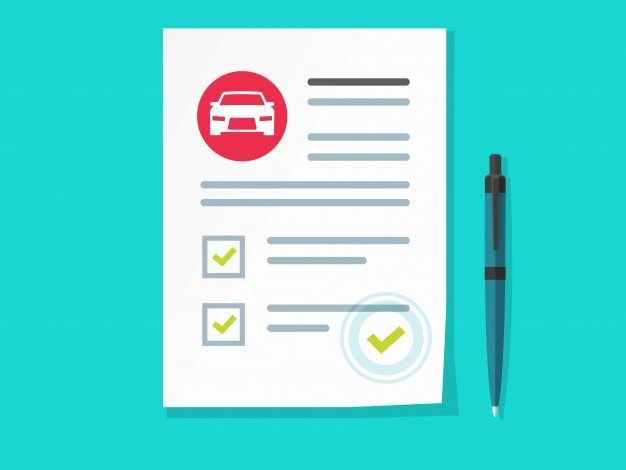Understanding the Roadworthy Certificate: What You Need to Know

If you’re a car owner, you’ve likely heard the term roadworthy certificate or roadworthy inspection before. But what does it really mean, and why is it so important? Whether you’re buying, selling, or simply maintaining your vehicle, a roadworthy certificate plays a crucial role in ensuring that your car is safe to drive and meets the minimum standards set by authorities. In this blog, we’ll break down everything you need to know about roadworthy certificates, from what they are to how you can obtain one.
What is a Roadworthy Certificate?
A roadworthy certificate (RWC) is a document issued after a vehicle passes an inspection that confirms it is safe to be driven on the road. The inspection focuses on the car’s essential safety features, including brakes, tires, lights, and steering. It does not assess the vehicle’s overall condition or appearance but rather ensures that the car is safe for both the driver and others on the road.
This certificate is a legal requirement in many regions, particularly when buying or selling a vehicle, or when registering a car for the first time. The goal is to reduce the number of accidents and breakdowns caused by mechanical failures or unsafe vehicles.
Why Do You Need a Roadworthy Certificate?
There are several reasons why obtaining a roadworthy certificate is necessary:
1. For Vehicle Sales: In many places, if you’re selling a car, you’re required by law to provide the buyer with a roadworthy certificate. This gives the buyer confidence that the vehicle is in a safe and roadworthy condition, and it ensures that you’re not selling an unsafe car.
2. For Registration: Before registering a vehicle, especially if it’s been unregistered for a period of time, a roadworthy certificate may be needed to prove the car meets safety standards.
3. For Transfers of Ownership: When transferring ownership of a vehicle, a roadworthy certificate is often required. This ensures that the new owner is receiving a car that is safe to drive.
4. For Inspections: If your vehicle is pulled over for a random inspection or if you’re involved in an accident, the authorities may require proof that your car has passed a roadworthy inspection. If your vehicle is found to be unroadworthy, it could be de-registered, impounded, or you could face fines.
5. Peace of Mind: Even if not legally required, many car owners opt to get a roadworthy certificate to ensure their vehicle is in top condition. This can provide peace of mind, knowing that all major safety features are functioning as they should.
What Does a Roadworthy Inspection Include?
A roadworthy inspection is typically more focused than a general car service. While a car service checks the overall health of the vehicle, a roadworthy inspection is specifically designed to verify whether the vehicle meets minimum safety standards. Some of the key areas that inspectors will focus on include:
· Brakes: The brakes must be in good working condition, with no signs of excessive wear or damage.
· Tires: The tires should have sufficient tread depth and no significant defects such as punctures or bulges.
· Lights and Indicators: All lights, including headlights, brake lights, indicators, and hazard lights, must be operational.
· Wipers and Windshield: The windshield should be free from cracks or significant chips, and the wipers must work properly.
· Suspension: The suspension system must be intact and capable of absorbing shocks effectively.
· Steering: The steering system should not have excessive play or be malfunctioning.
· Exhaust System: The exhaust system should not be leaking or emitting excessive fumes.
· Seatbelts: All seatbelts should be functional and in good condition.
· Horn: The horn must be loud and operational.
· Body Condition: The body of the vehicle should not have any sharp edges, rust, or structural damage that could compromise safety.
Each state or region may have specific requirements and standards for a roadworthy certificate, so it’s important to check with your local authorities or testing centers to understand the exact details of what will be inspected.
How to Get a Roadworthy Certificate
The process for obtaining a roadworthy certificate generally involves the following steps:
1. Find an Authorized Inspection Station: Roadworthy inspections can only be carried out by licensed and authorized inspection stations. These are typically automotive repair shops, service centers, or specialized vehicle inspection facilities.
2. Book an Appointment: Call the inspection station to schedule an appointment. Make sure your vehicle is in good condition before going for the inspection, as any issues may result in a failed inspection.
3. Vehicle Inspection: The vehicle will be inspected according to the standards set by local authorities. If it passes, the inspector will issue a roadworthy certificate. If it fails, you’ll be informed of the issues, and you’ll have the opportunity to repair the vehicle and schedule a re-inspection.
4. Pay the Fees: Roadworthy inspection fees vary depending on the service provider and location, but they generally range from $50 to $150.
5. Get the Certificate: If your car passes the inspection, you’ll be given the roadworthy certificate. This certificate is usually valid for 30 days, so make sure to act promptly if you’re selling or registering the vehicle.
Conclusion
A roadworthy certificate is an essential document for ensuring the safety and reliability of your vehicle. It confirms that your car meets the necessary safety standards, providing you with peace of mind while driving. Whether you’re selling, buying, or simply maintaining your vehicle, understanding the importance of a roadworthy certificate can help you avoid unnecessary hassle and keep your car roadworthy for years to come. Remember to always get your vehicle inspected by an authorized station and take care of any issues promptly to ensure your car remains safe on the road.






